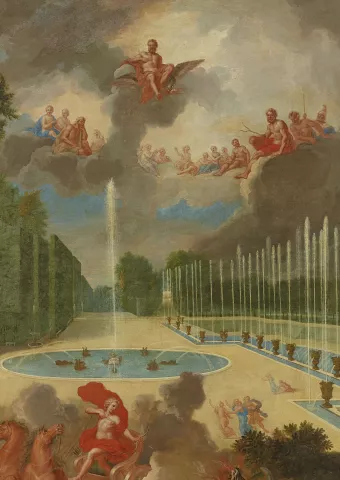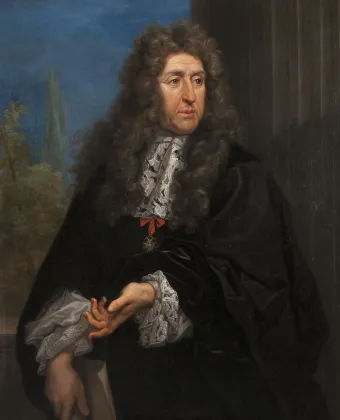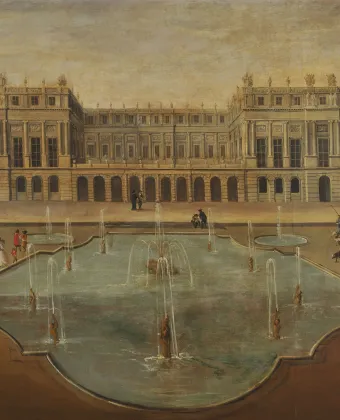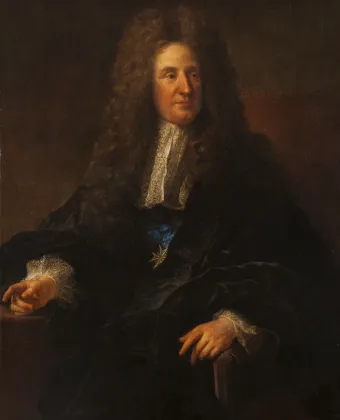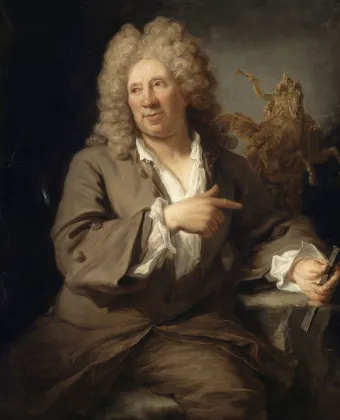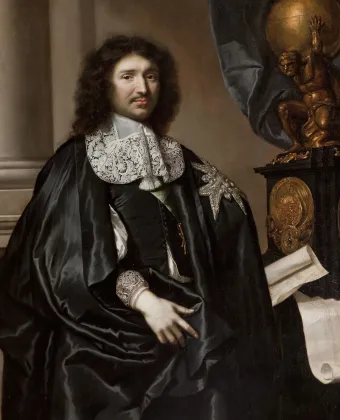The founding member of this dynasty, Thomas Francine (born Tommaso Francini) was summoned to France in 1599 by Henry IV to build the water features for the automata in the grottos in the terrace garden of Saint-Germain-en-Laye. Francini arrived with his brothers Alessandro and Camillio and his cousin Orazio. The later members of the family included François, his son (1617-1688), Pierre-François (1654-1720), his grandson, François-Henri (1684-1781), his great-grandson, and Thomas François Honoré (1724-1780), his great-great-grandson.
Alongside Denis Jolly, who had been fountain engineer to Fouquet at Vaux-le-Vicomte, François Francine designed the water features of the Grotto of Thetis in 1664-65, his first major hydraulic work in Versailles. The work was composed of songbirds controlled by a water organ which caused the water to fall in a cascade or mushroom shape. Although demolished in 1676, the grotto went down in history.
In 1667 François Francine created three reservoirs not far from the one near the grotto to supply the large fountains in the main axis with water: Latona’s Fountain and Apollo’s Fountain.
In 1673 he designed the huge reservoirs beneath the Water Parterre, built by François d’Orbay, to supply the new fountains and pools in the gardens. These large vaulted constructions of cut stone are still used today to convey water via a complex network of lead pipes on Grandes Eaux Fountain Display Days.
François Francine had an impressively creative mind, as demonstrated by the interlacing water jets in the Grove of the Three Fountains, the waterfalls in the Ballroom Grove, and the 27-metre jet in the Dragon Fountain, the tallest in the garden. The water features with sculpted children and animals in the Maze Grove and the Water Theatre Grove were just as impressive, although sadly they no longer exist. Notably, in 1672, Versailles saw the creation of the first cast iron pipes in France.
Supplying water to the fountains posed a major problem for the king and his fountain engineers, and they considered diverting the River Eure. A large network of aqueducts and underground and aboveground reservoirs was designed around Versailles. Every lake and river from the town of Rambouillet to the Seine, where the famous Marly Machine was built, were used to supply water for the fountains, but even this was not enough. As a result of the insufficient supply of water, the Francines were forced to start up the fountains in turn as the king passed by, using a whistle blast as a signal for one to stop and the other to start. The same issue still poses a problem today.



